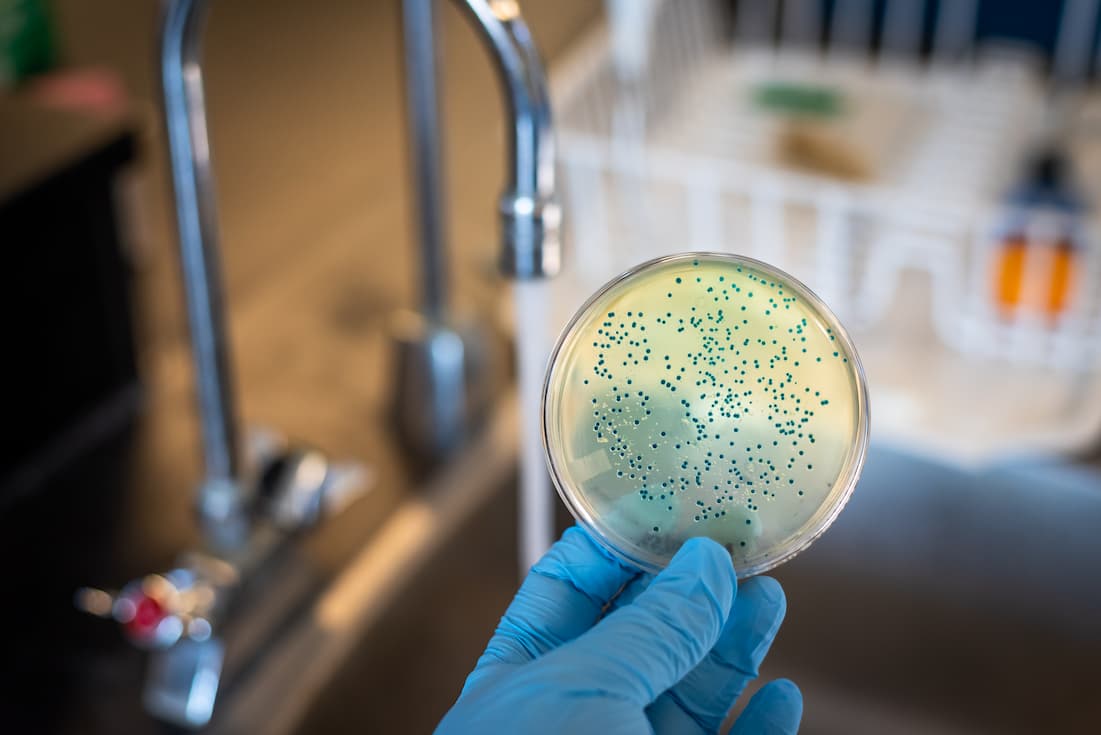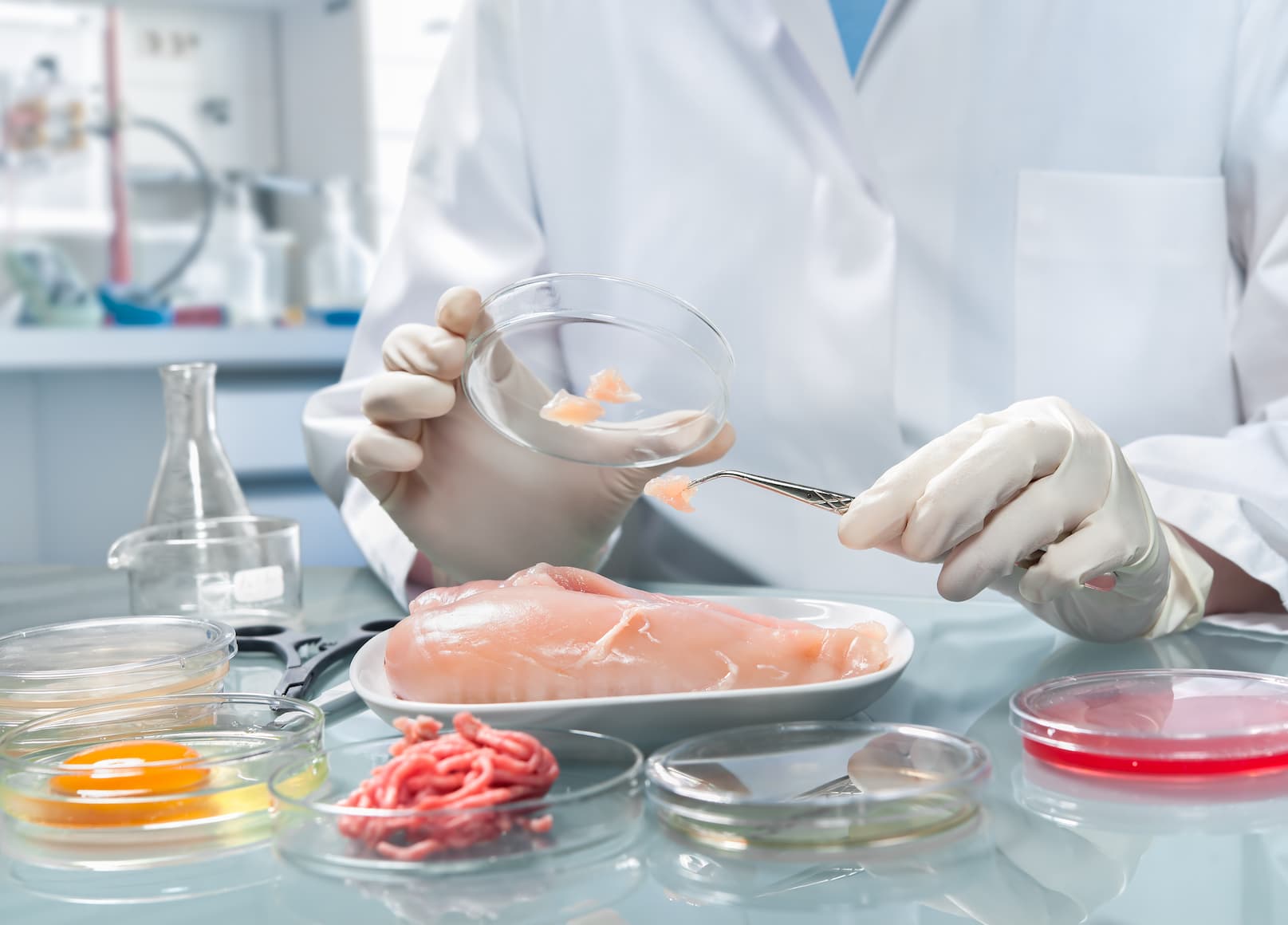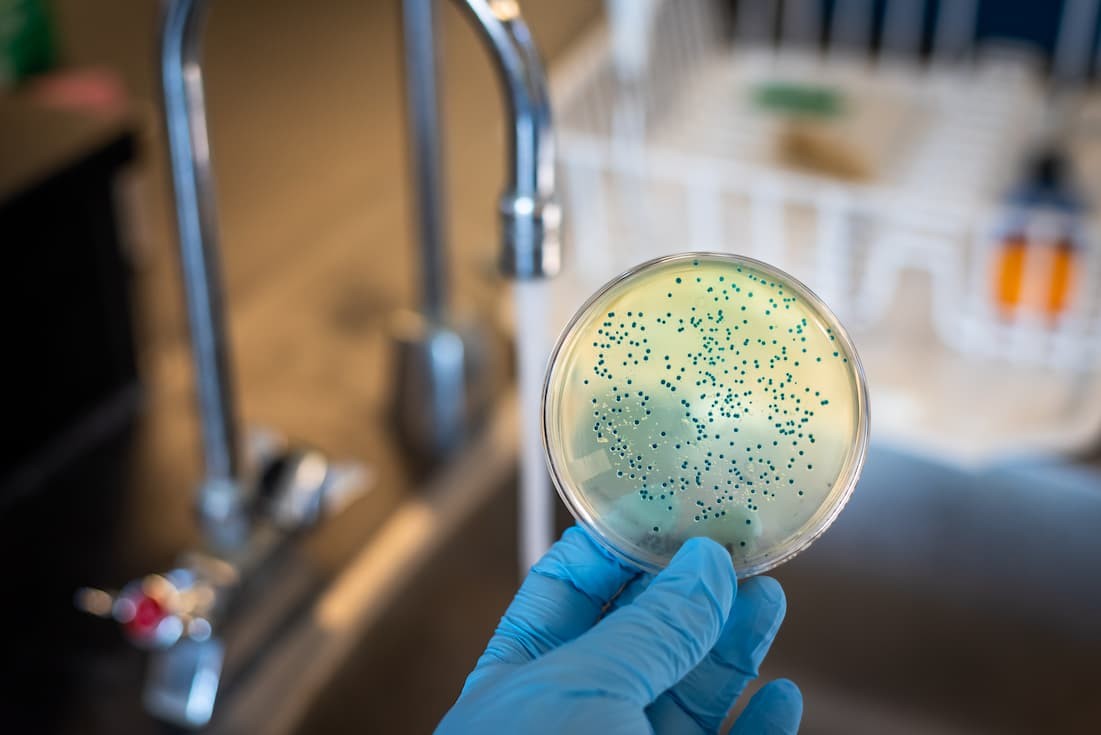Biological hazard in food represents a significant concern for food safety, with potential consequences ranging from mild discomfort to severe illness. FOODS.EDU.VN is committed to providing an in-depth understanding of these hazards and equipping you with the knowledge to mitigate risks, thereby ensuring food safety. This guide explores the definition, sources, prevention, and control of these hazards, offering solutions for a safer food environment.
1. Understanding Biological Hazards in Food
Biological hazards in food refer to pathogenic microorganisms or their toxic byproducts that, when ingested, can lead to foodborne illnesses, often referred to as food poisoning. It’s crucial to differentiate between biological hazards and biological contamination. While the former refers to the harmful organisms themselves, the latter describes the introduction of these organisms into the food chain. These biological agents, including bacteria, viruses, parasites, and fungi, pose a significant threat to public health, as evidenced by numerous foodborne illness outbreaks throughout history. The presence of these hazards can trigger symptoms like diarrhea and abdominal cramps, and in severe cases, can even result in mortality if left unaddressed.
Biological hazards can cause either infection, where the organism itself invades the body, or intoxication, where toxins produced by the organism cause the illness. The effect can vary based on the specific organism, environmental factors, and the effectiveness of food safety practices.
2. Common Types of Biological Hazards
Understanding the different types of biological hazards is essential for implementing effective control measures. These hazards include:
2.1. Viruses
Viruses stand out due to their resilience, capable of withstanding high acidity and heat, and are easily transmissible from food handlers to food. Viruses are commonly associated with contaminated water, seafood, vegetables, and infected food handlers. Common viral infections include gastroenteritis and hepatitis.
2.2. Bacteria
Bacteria, single-celled microorganisms thriving on moist food items, can cause undesirable changes and hazardous effects. Ubiquitous in food businesses, they’re found in water, air, soil, and animal gastrointestinal tracts. They can cause both intoxication and infection.
Common foodborne bacteria include:
- Escherichia coli (E. coli): Frequently found in water, leafy greens, raw milk, and meat.
- Bacillus cereus: Common in rice and starchy foods.
- Salmonella: Typically found in raw meat and poultry products.
- Staphylococcus: Often present on the skin of food handlers and poultry products.
- Listeria: Commonly found in unpasteurized milk, ice cream, and vegetables.
- Campylobacter: Common in undercooked poultry.
- Clostridium: Usually found in undercooked meat products.
2.3. Fungi
Fungi, including yeasts and molds, are known for surviving in acidic and dry conditions, making them a significant concern for intermediate moisture foods and preserved products. While some fungi are economically useful, others can cause serious illnesses.
Common foodborne fungi include:
- Aspergillus sp.: Commonly found in grains and nuts.
- Candida sp.: Often found in grains, dairy products, and processed meats.
2.4. Parasites
Parasites are microorganisms that derive nutrition from a host, often living in moist foods and transferring to humans, where they can cause foodborne illnesses.
Common foodborne parasites include:
- Trichinella sp.: Typically found in raw meats.
- Cryptosporidium sp.: Common in raw milk and contaminated water.
2.5. The “Big 6” Pathogens
Several species are recognized to cause the most foodborne illness cases worldwide. The “Big 6” major pathogens include:
- Norovirus
- Nontyphoidal Salmonella
- Salmonella Typhi
- E. coli
- Shigella
- Hepatitis A
2.6. Natural Toxins
In some instances, natural toxins produced by dangerous pathogens are also categorized as biological hazards. For example, certain types of fish can accumulate toxins that cause scombroid poisoning if not properly handled and refrigerated. FOODS.EDU.VN provides comprehensive resources on identifying and managing such risks to ensure food safety.
According to the CDC, biological hazards significantly contribute to the average of 48 million cases of foodborne illnesses in the U.S. each year.
3. Sources of Biological Hazards in Food
Biological hazards can be found in various sources, including:
- Raw Materials: Many biological hazards are soilborne and are considered environmental contaminants, especially for plant materials. Strict preparation of raw materials is necessary to reduce the potential microbial load.
- Air Ventilation Systems: Microscopic organisms can be transferred through the air, along with dust and dirt. Airborne pathogens can travel through spores, growing on foods once they land.
- Pests: Pests can carry harmful bacteria and viruses, easily spread through foreign materials.
- Water: A contaminated water system can easily contaminate an entire food service area, as water is used in almost all kitchen operations.
It’s also important to recognize that food handlers themselves can be a significant source of contamination through cross-contamination and poor hygiene practices.
Here’s a table summarizing common sources and preventive measures:
| Source | Common Biological Hazards | Preventive Measures |
|---|---|---|
| Raw Materials | E. coli, Salmonella, parasites | Thorough washing, proper storage, cooking to safe temperatures |
| Air Ventilation | Mold spores, airborne bacteria | Regular cleaning and maintenance of ventilation systems, air filtration |
| Pests | Salmonella, E. coli | Pest control measures, proper waste disposal, sealing entry points |
| Water | Viruses, bacteria, parasites | Regular water testing, filtration and disinfection, use of potable water sources |
| Food Handlers | Norovirus, Staphylococcus aureus, Shigella | Proper handwashing, use of gloves, personal hygiene practices, health monitoring |
| Cross-Contamination | Various bacteria and viruses | Separating raw and cooked foods, using separate cutting boards and utensils, cleaning and sanitizing surfaces |
| Temperature Abuse | Clostridium perfringens, Bacillus cereus, Listeria | Monitoring and controlling storage and cooking temperatures, avoiding the temperature danger zone (40°F – 140°F or 4°C – 60°C) |
| Improper Cleaning | Various bacteria and viruses | Regular and thorough cleaning and sanitizing of all food contact surfaces, equipment, and utensils |
| Food Storage Practices | Listeria, Salmonella | Proper refrigeration, labeling and dating of food items, following FIFO (First In, First Out) principle |
| Inadequate Cooking | Salmonella, E. coli, parasites | Cooking foods to the recommended internal temperatures, using a food thermometer to verify temperatures |
| Unsafe Food Sources | Various pathogens | Purchasing food from reputable and approved suppliers, verifying supplier food safety practices |
| Insufficient Thawing | Clostridium perfringens, Staphylococcus aureus | Thawing food properly in the refrigerator, in cold water, or in the microwave, and cooking immediately after thawing |
| Food Processing | Listeria monocytogenes, Salmonella, E. coli | Implementation of HACCP (Hazard Analysis and Critical Control Points) principles, proper pasteurization, irradiation, or other effective methods |



4. Preventing Biological Hazards: Best Practices
Effective food safety practices are essential for preventing biological hazards. Key strategies include:
- Proper Handwashing: Regular and thorough handwashing is critical.
- Following Dress Code: Adhering to a proper dress code for food handlers prevents contamination from dirty clothes.
- Cooking to Correct Temperatures: Cooking foods to the correct internal temperature kills harmful pathogens.
- Refrigerator Organization: Organizing foods in the refrigerator prevents cross-contamination.
- Using Separate Tools: Use separate tools and kitchen utensils for preparing raw and ready-to-eat products.
- Cleaning and Sanitizing Surfaces: Clean surfaces before applying sanitizer.
- Wearing Gloves: Instruct food handlers to wear gloves when necessary.
- Following Sanitizer Instructions: Make sure to follow the manufacturer’s instructions in using sanitizers.
- Inspecting Food Supplies: Inspect incoming food supplies for proper storage conditions and food quality.
- Controlling Storage Conditions: Monitor and control storage conditions (e.g., temperature and humidity), avoiding the temperature danger zone.
- Preventing Sick Employees from Preparing Food: Do not allow sick food handlers to prepare food.
These practices must be consistently followed and monitored to ensure food safety.
5. Biological Hazards in Restaurants: A Closer Look
Restaurants provide a hospitable environment for biological hazards, emphasizing the importance of training food handlers to prevent contamination.
Common biological hazards in restaurants include:
- Viruses and bacteria from food handlers (e.g., norovirus and Staphylococcus aureus).
- Bacterial pathogens from raw ingredients (e.g., Salmonella in poultry products).
- Parasites and hepatitis A virus from the water system.
- Yeast on fresh fruits and vegetables.
- Cross-contaminated ready-to-eat foods.
6. The Impact of Biological Hazards
The effects of biological hazards can range from mild to life-threatening, depending on the causative agent, degree of contamination, and consumer health.
Symptoms can include:
- Watery diarrhea
- Abdominal pain
- Fever
- Nausea
- Vomiting
- Fatigue
In vulnerable populations, such as pregnant women, the elderly, and young children, the effects can be more severe. Uncontrolled biological agents can lead to foodborne outbreaks, requiring cooperation with food safety inspectors to manage the situation.
7. Monitoring and Control Solutions with FOODS.EDU.VN
FOODS.EDU.VN offers solutions for monitoring food safety practices, including generating monitoring logs with prefill solutions and a smart notification system. Our digital solutions make it less likely for food handlers to forget tasks through a smart notification system.
7.1. Automated Hazard Analysis
Hazard analysis is a critical task, especially for creating risk-based food safety plans. Biological hazard assessments involve identifying the potential public health risk, the severity of the illness, and the likelihood of occurrence.
At FOODS.EDU.VN, you can automatically have a comprehensive list of biological, physical, and chemical hazards related to your food business. Our customizable digital HACCP plan builder generates a thorough, smart hazard analysis table complete with essential information about the hazards.
This table can include details such as:
- Hazard Description: A detailed description of the biological hazard, including its nature and potential sources.
- Potential Severity: An assessment of the severity of the illness that the hazard can cause, ranging from mild to life-threatening.
- Likelihood of Occurrence: An evaluation of the probability of the hazard occurring in the food production process, ranging from rare to frequent.
- Preventive Measures: Specific steps and procedures that can be implemented to prevent or minimize the hazard.
- Critical Control Points (CCPs): Identification of the critical points in the process where control measures are essential to eliminate or reduce the hazard to an acceptable level.
- Monitoring Procedures: Methods for monitoring the effectiveness of the control measures at each CCP.
- Corrective Actions: Actions to be taken if monitoring indicates that a CCP is not under control.
- Verification Procedures: Activities to verify that the HACCP system is working effectively, such as regular audits and testing.
- Responsible Party: Designation of the individual or team responsible for implementing and monitoring the HACCP plan.
The hazard analysis part is just the first of many features of our digital HACCP plan builder. In just 1 hour, you can get a complete and customizable digital HACCP plan by answering a few basic questions about your business.
7.2. Efficient Monitoring of Biological Hazards
After establishing your HACCP food safety plan, use our digital Food Safety Management System to automatically generate all essential monitoring logs to make monitoring tasks easier. Our digital solution provides useful and intuitive features such as automatically generated monitoring logs fit for your business operations.
Some of the most useful logs that our software can provide for controlling biological hazards include:
- Cooking temperature log
- Water testing log
- Employee hygiene checklist
- Master sanitation schedule
- Fridge temperature log
- Receiving chilled goods log
All monitoring logs and checklists are equipped with detailed instructions to guide food handlers in performing and monitoring the tasks. Use our smart FOODS.EDU.VN app on any mobile device to make monitoring easier and more accessible.
8. Food Safety Regulations and Compliance
Adhering to food safety regulations is crucial for preventing biological hazards. Regulatory bodies like the FDA and USDA set standards for food handling, processing, and storage. Compliance with these regulations helps ensure that food businesses implement the necessary controls to prevent contamination and protect public health.
Regular inspections, audits, and certifications are common methods used to verify compliance with food safety standards. Training programs for food handlers are also essential to ensure they understand and follow proper food safety practices. FOODS.EDU.VN provides resources and tools to help food businesses stay informed about and comply with the latest regulations.
Here’s a table highlighting some key food safety regulations and their objectives:
| Regulation | Regulatory Body | Objective |
|---|---|---|
| Food Safety Modernization Act (FSMA) | FDA | To shift the focus from responding to foodborne illnesses to preventing them, ensuring the U.S. food supply is safe by focusing on prevention. |
| Hazard Analysis and Critical Control Points (HACCP) | FDA/USDA | A systematic approach to identify, evaluate, and control food safety hazards, ensuring food products are safe for consumption. |
| Current Good Manufacturing Practices (CGMPs) | FDA | Guidelines that outline the minimum requirements for manufacturing, processing, packing, and holding human food to ensure it is safe and properly labeled. |
| Food Code | FDA | A model for safeguarding public health and ensuring food is safe, offering practical guidance for food service and retail establishments. |
| National Organic Program (NOP) | USDA | Protects the integrity of organic products, ensuring they meet strict production, handling, and labeling standards. |
| Seafood HACCP Regulation | FDA | Requires seafood processors to implement HACCP systems to control food safety hazards associated with seafood products. |
| Pasteurized Milk Ordinance (PMO) | FDA | Sets standards for milk and milk products to ensure they are safe and wholesome, including requirements for pasteurization and sanitation. |
| Poultry Products Inspection Act | USDA | Ensures that poultry products are safe, wholesome, and accurately labeled, requiring inspection of poultry slaughtering and processing plants. |
| Federal Meat Inspection Act | USDA | Ensures that meat products are safe, wholesome, and accurately labeled, requiring inspection of meat slaughtering and processing plants. |
| Bioterrorism Act | FDA | Enhances the security of the U.S. food supply by requiring registration of food facilities and establishing procedures for administrative detention of food. |
9. Real-World Examples and Case Studies
Examining real-world examples and case studies can provide valuable insights into the impact of biological hazards and the effectiveness of different control measures.
- Outbreak of E. coli in Spinach (2006): This outbreak, linked to contaminated spinach, resulted in numerous illnesses and hospitalizations. Investigations revealed that the contamination likely occurred due to irrigation water contaminated with animal waste. This case highlighted the importance of water quality testing and proper agricultural practices.
- Salmonella Outbreak Linked to Peanut Butter (2008-2009): This widespread outbreak, traced to contaminated peanut butter, caused hundreds of illnesses and several deaths. It was found that the peanut butter processing plant had inadequate sanitation and pest control measures. This case emphasized the need for stringent hygiene practices and regular inspections in food processing facilities.
- Listeria Outbreak Linked to Cantaloupe (2011): This outbreak, associated with contaminated cantaloupe, resulted in a high number of illnesses and fatalities, particularly among the elderly. The contamination was attributed to poor sanitation practices and inadequate cooling of the cantaloupe. This case underscored the importance of proper cleaning, disinfection, and temperature control in produce handling.
Here’s a summary table of these case studies:
| Case Study | Hazard | Source of Contamination | Key Lessons Learned |
|---|---|---|---|
| E. coli in Spinach (2006) | E. coli | Contaminated irrigation water | Importance of water quality testing and proper agricultural practices. |
| Salmonella in Peanut Butter (2008-2009) | Salmonella | Inadequate sanitation and pest control | Need for stringent hygiene practices and regular inspections in food processing facilities. |
| Listeria in Cantaloupe (2011) | Listeria | Poor sanitation and inadequate cooling | Importance of proper cleaning, disinfection, and temperature control in produce handling. |
| Cyclospora in Basil (2015-2016) | Cyclospora | Contaminated wash water | Need for thorough washing and sanitation of fresh produce, especially leafy greens, to prevent parasitic contamination. |
| Norovirus on Cruise Ships (Ongoing) | Norovirus | Person-to-person contact, contaminated food | Importance of strict hygiene protocols, sanitation measures, and food handling practices to control the spread of norovirus in closed environments. |
| Hepatitis A in Strawberries (2016) | Hepatitis A Virus | Contaminated water and poor worker hygiene | Need for safe water sources and good personal hygiene among farm workers to prevent viral contamination of produce. |
| Cronobacter (formerly Enterobacter sakazakii) in Infant Formula (2022) | Cronobacter | Contaminated dry infant formula | Need for stringent hygiene and sanitation controls during the production of infant formula |
10. Frequently Asked Questions (FAQs)
Here are some frequently asked questions regarding biological hazards in the food industry:
10.1. What should food workers do to prevent biological hazards from contaminating foods?
The most effective food handling practice is to practice proper handwashing consistently. The CDC suggests that up to 50% of infections and deaths from diarrheal diseases could be prevented with proper handwashing.
10.2. Is biological hazard usually set as a Critical Control Point?
Establishing a Critical Control Point depends on the severity and likelihood of occurrence. If a biological hazard has a very high potential severity and is very likely to occur, then a critical control point may be established for its control.
10.3. Which bacteria are defined as biological hazards?
All pathogenic bacteria are identified as biological hazards. This includes bacterial agents that can cause acute effects on humans when consumed through contaminated food.
10.4. What is the most common biological hazard in food?
Bacteria and viruses account for the majority of identified foodborne illness-causing hazards in the food industry.
10.5. How can consumers protect themselves from biological hazards in food at home?
Consumers can protect themselves by following safe food handling practices, such as washing hands before preparing food, cooking food to the proper internal temperature, and properly storing leftovers.
10.6. What role does proper sanitation play in preventing biological hazards?
Proper sanitation is crucial for preventing biological hazards. Regular cleaning and sanitizing of food contact surfaces, equipment, and utensils can help eliminate or reduce the presence of harmful microorganisms.
10.7. How do food safety regulations help prevent biological hazards in food?
Food safety regulations set standards for food handling, processing, and storage. Compliance with these regulations helps ensure that food businesses implement the necessary controls to prevent contamination and protect public health.
10.8. What are the key differences between bacteria, viruses, and parasites as biological hazards?
- Bacteria are single-celled microorganisms that can multiply rapidly in food and cause illness through infection or toxin production.
- Viruses are smaller than bacteria and require a host to multiply. They can contaminate food through infected individuals or contaminated water.
- Parasites are organisms that live in or on a host and derive nutrients from it. They can contaminate food through infected animals or contaminated water.
10.9. How can temperature control help prevent the growth of biological hazards in food?
Temperature control is essential for preventing the growth of biological hazards. Keeping food at the proper temperatures (below 40°F or above 140°F) inhibits the growth of many harmful microorganisms.
10.10. What steps should be taken if a foodborne illness outbreak is suspected?
If a foodborne illness outbreak is suspected, it is important to report it to the local health department immediately. Provide as much information as possible, including the type of food consumed, the symptoms experienced, and the number of people affected.
11. Call to Action
At FOODS.EDU.VN, we understand the challenges you face in ensuring food safety. From finding reliable recipes to understanding complex food safety practices, we’re here to help.
Ready to take control of your food safety? Visit FOODS.EDU.VN today to explore our comprehensive resources and discover how our digital solutions can streamline your operations. Our platform offers everything from detailed recipes and cooking techniques to in-depth guides on food safety management.
Contact Us:
- Address: 1946 Campus Dr, Hyde Park, NY 12538, United States
- WhatsApp: +1 845-452-9600
- Website: FOODS.EDU.VN
Discover the tools and knowledge you need to create a safer, more delicious food experience. Don’t wait – start your journey towards food safety excellence with foods.edu.vn now.
